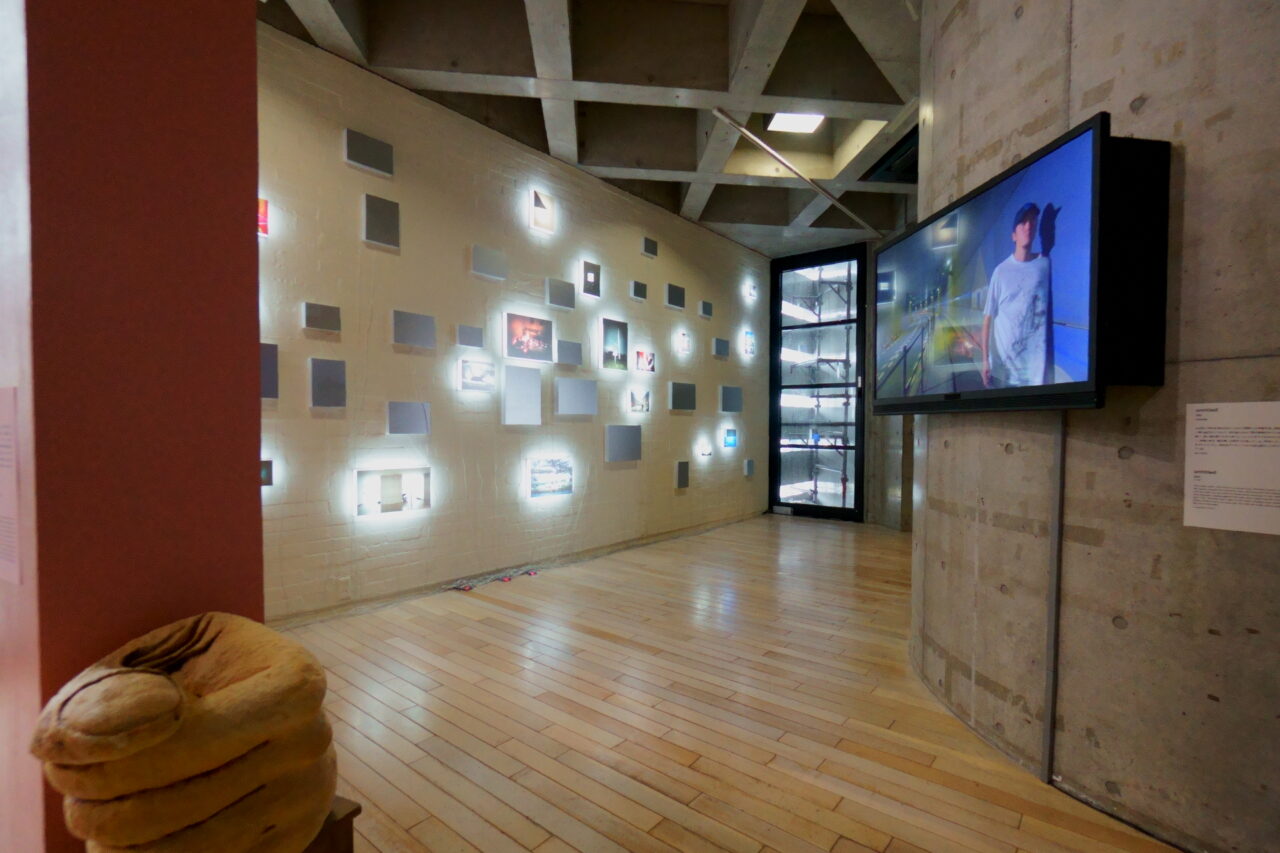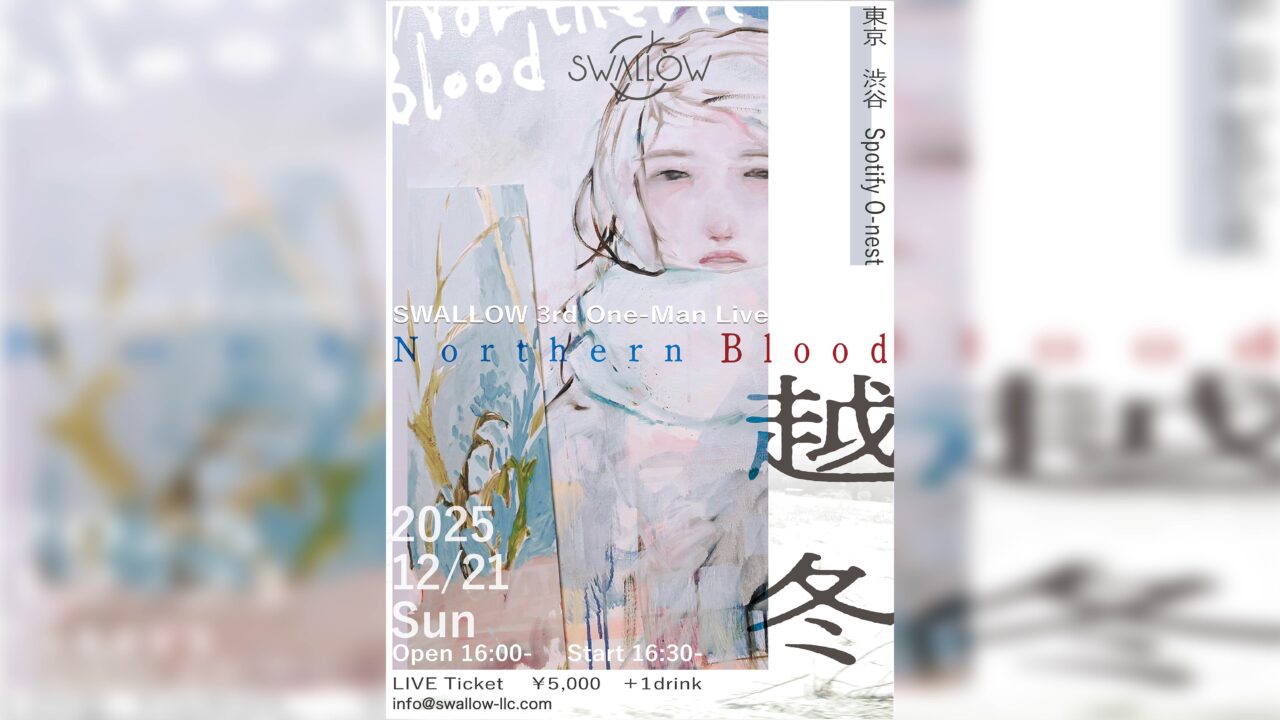INDEX
Chapter 2: “Action” — How to Interact with the City?
On the third floor, be sure to pay attention to the video works. Additionally, don’t miss the opportunity to view artworks while moving between the second and third floors.

One of the most striking and solidly crafted works is the video piece untitled on the left. It features a figure walking expressionlessly through a tunnel with passing cars in a four-and-a-half-minute film. As the figure moves, they rub their shoulder against the wall, scraping away accumulated exhaust soot. This causes the figure’s T-shirt to turn completely black, leaving a line at shoulder height on the wall where the figure has walked. Despite using a different medium, this too can be seen as a form of graffiti in the sense that it leaves a trace of its presence in the city.
The description notes that the work involves “scanning the city through the body,” which makes sense—if you want to engage with a subject, physical contact is necessary, and traces will inevitably be left behind. As I watched, I began to understand why artists intervene in urban spaces and why art in public spaces exists. It became clear that this engagement is essential for perceiving and understanding the world around us.
The more you become aware of the strange details of the city through a particular perspective, the more overwhelmed you can feel by its complexity and sheer volume of information. Feeling disoriented about where you are standing can be quite unsettling. Just as you would wander aimlessly around a new neighborhood when you move, to firmly establish your presence in the city, you need to engage with it and mark your place, even if just incrementally. In that light, street art seems quite earnest.

As you proceed further, more video works are displayed. empty spring, as it is titled, shows the streets of Shibuya completely deserted during the state of emergency in April 2020.

However, this work is more than just a recording. It captures what appears to be poltergeist phenomena (or something like it) occurring in various parts of deserted Shibuya. Traffic cones cross the crosswalk on their own, and trash cans next to vending machines eject cans. While the visible strings pulling the objects make it clear that this isn’t meant to be a realistic ghost story, the setting includes iconic locations like Shibuya’s scramble crossing and in front of PARCO, and the scenes are set in broad daylight. In an otherwise unimaginable empty cityscape, these manual “poltergeists” come to life. In other words, this is not CGI. The work doesn’t simply play with the idea of inanimate objects moving by themselves in an empty city. Instead, it presents an eerie situation that is almost unbelievable, with a chilling backdrop that makes it a truly unsettling experience.
























